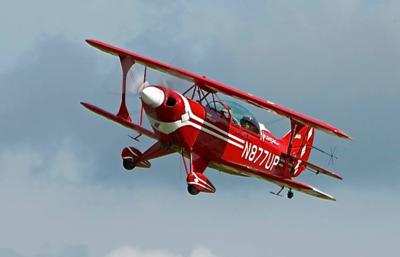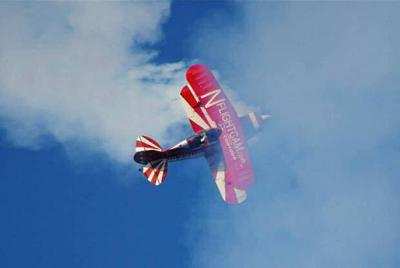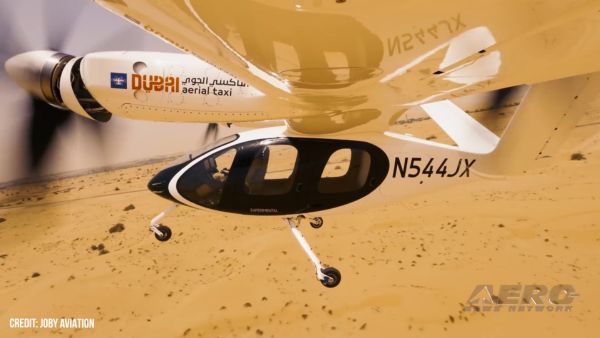Fri, Jul 10, 2015
Steven O’Berg Was On His Ninth Of 10 Planned Maneuvers
The NTSB has released its preliminary report from an accident at the Cameron Air Show at Cameron (MO) Memorial Airport (KEZZ) on June 27th. The accident fatally injured air show pilot Steven O'Berg.

According to the report, at about 1353 CDT, the Christen Industries Pitts S-2B, N877UP, being flown by O'Berg sustained substantial damage when it impacted terrain during the air show performance. The airplane was registered to and operated by the pilot under the provisions of the 14 Code of Federal Regulations as a Part 91 airshow flight. Day visual meteorological conditions prevailed for the airshow demonstration flight that departed from EZZ about 1330. No flight plan was filed.
The pilot's flight demonstration card used during the airshow indicated that the pilot planned to do 10 aerobatic maneuvers during the flight. For the ninth maneuver, it indicated that he planned to do a Lomcevak maneuver. An airshow pilot who was familiar with the accident pilot's airshow routine, reported that the accident pilot intended to do a 45-degree knife-edge climb, perform the Lomcevak maneuver, and then continue the knife-edge climb. Video recordings taken by persons on the ground showed the airplane flying through the planned routines. Between the eighth and ninth aerobatic maneuvers, the videos showed the airplane doing a course reversal, and then flying straight and level before entering into a knife-edge climb. During the knife-edge climb, the airplane appeared to enter the Lomcevak maneuver by doing a climbing snap-roll to the left. Then the nose of the airplane pitched down and the airplane tumbled two times to the left while descending. The airplane appeared to enter a left spin and
completed about two and a half revolutions before it impacted the terrain.

The airplane impacted the trees and terrain in a shallow nose down attitude with a high vertical descent rate. The engine compartment, fuselage, wings, and empennage remained intact and there was no post impact ground fire. The engine compartment exhibited upward crushing, and the leading edges of the wings did not exhibit aft crushing. Flight control continuity was confirmed from all flight control surfaces to their respective cockpit controls. The elevator trim continuity was confirmed from the elevator trim tabs to the elevator trim control.
The engine will be shipped to the manufacturer for an engine teardown examination. The videos and still photographs of the accident flight will be examined at the National Transportation Safety Board's (NTSB) Vehicle Recorder laboratory.
(O'Berg's Pitts pictured in file photos)
More News
Airplane Bounced About 3 Ft Then Touched Back Down And Then, With No Brakes Applied, The Airplane Began Veering To The Left Analysis: The pilot entered the airport traffic pattern >[...]
Aero Linx: British Microlight Aircraft Association (BMAA) The primary focus within all aviation activity is SAFETY. In all aspects of our sport SAFETY must come first, whether it b>[...]
From SnF25 (YouTube Edition): William Wynne Builds Practical Aircraft Engines on the Corvair Platform Seeking an affordable alternative to the traditional aircraft engine options, >[...]
How To Get A Story On Aero-TV News/Feature Programming How do I submit a story idea or lead to Aero-TV? If you would like to submit a story idea or lead, please contact Jim Campbel>[...]
From 2023 (YouTube Edition): Bridge of CiES CiES Inc. is a Bend, Oregon-based designer and manufacturer of modular embedded aircraft systems and sensors. The company’s fuel-l>[...]
 NTSB Final Report: Aviat A1
NTSB Final Report: Aviat A1 ANN's Daily Aero-Linx (07.08.25)
ANN's Daily Aero-Linx (07.08.25) Classic Aero-TV: Fly Corvairs Reliable Engine Alternative
Classic Aero-TV: Fly Corvairs Reliable Engine Alternative ANN FAQ: Contributing To Aero-TV
ANN FAQ: Contributing To Aero-TV Classic Aero-TV: CiES Fuel-Quantity and e-Throttle Systems Praised
Classic Aero-TV: CiES Fuel-Quantity and e-Throttle Systems Praised




